The name of the trees in alphabetical order in Russia. Flora, or the flora of the earth
In terms of species composition, temperate forests are much less tropical. Trees in central Russia are few and seemingly should be known to everyone. But it is not. Of course, everyone can easily recognize birch, pine or spruce, but not everyone can tell elm from maple or be able to describe what a linden looks like. It should also be noted that some trees prevail in the forests, and others in the cities. This article focuses primarily on forest species.
Trees of Central Russia: Names
The most common conifer of the East European Plain is pine. Spruce ordinary is slightly less popular. Sometimes there are white fir and deciduous larch. But the dominant position belongs deciduous. They grow faster than conifers, and they are easier to adapt to environmental changes, so that they take root even in big cities. According to studies conducted on the territory of the Central Russian Upland, the cardiovascular linden and common ash are the prevailing indigenous species. Naturally, birch and aspen are ubiquitous. Along the banks of the forest rivers, various species of willows and black alder grow. In shady places comes across a rough elm (aka mountain elm). The characteristic trees of central Russia are various maples, and ordinary mountain ash, and forest apple. In the cities, decorative forms of apple trees, black and white poplars, horse chestnut are widespread.
Ash Ash
One of the most impressive in our forests: it reaches a forty-meter height. Ash has a straight trunk; bark gray-greenish. The tree prefers moist but not swampy soils, therefore it often grows along streams and rivers. Young ash trees, in contrast to adults, are not demanding. In winter, a tree is easily identified by large black buds. Ash crown - high set, openwork, beautiful shape. He has very recognizable leaves - long (up to 35 cm), pinnate.
In general, central Russia is the most accessible material for identification. Analyzing their shape, it is relatively easy to determine a species.
Heart Lime (small-leaved)
It is a fairly high (up to 35 meters) tree. It grows on the plains and in the foothills, often on cliffs, slopes. It survives well in cities and therefore is often used as a walkway plant. Linden has a straight trunk with wrinkled, grayish bark. Trees that grow in glades have powerful egg-shaped crowns. Lipa is a honey tree. It blooms late in the middle of summer. Small white-yellow flowers have a pronounced sweetish aroma and attract bees. In addition, they are a drug.

The flowers are collected in a bunch, at the base of which is a long leaf - a lionfish. Linden fruits are round nuts. The leaves are rounded-heart-shaped, slightly resembling poplar leaves. Deciduous trees of central Russia, as a rule, do not differ in particular durability, but the heart-leaved linden can live up to 800 years.
Black alder
This tree has nothing against increased humidity. It is found in river valleys and even in swamps. Alder grows to 30 meters. Its trunk is dark with deep wrinkles, the wood is reddish-yellow. The leaves are rounded, with a notch opposite the cutting. Alder blooms in mid-spring, just during the flood. In male trees, flowers are collected in long yellow-purple earrings. Female inflorescences have the form of solid cones.
The black alder loves the light and it is a useful plant. Its wood is suitable for use in high humidity environments.
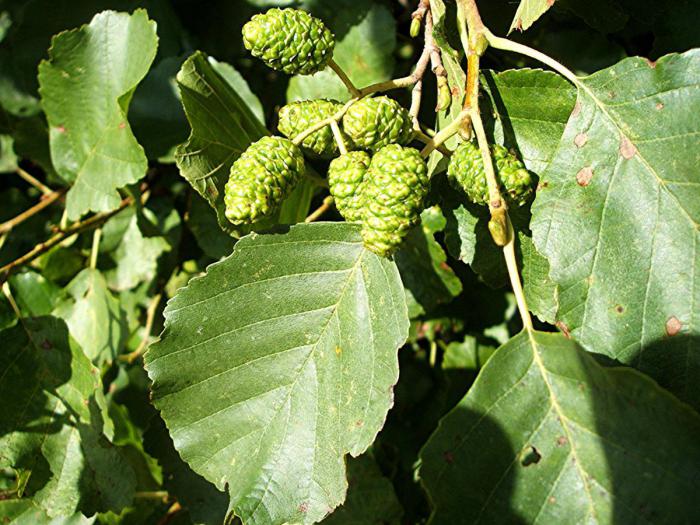
Pedunculate oak
The trees of central Russia are medicinal, some of their parts are often used in medicine. The oak with its dark and very coarse, but healing bark is no exception. This tall tree grows on hills and valleys. It has knobby branches and easily recognizable leaves, which are called peristolopastny, as they consist of several pairs of accrete blades.
Oaks bloom in late spring. Fruits are light brown-yellow acorns (2-3 pieces on a long petiole). Oaks live long, their wood is hard and not rotting. For this reason, make it expensive furniture "for centuries".

Elm rough (mountain elm)
Due to the abundance of longitudinal cracks in its cortex. The height of the elm is 30 meters, while the plant is very slender, with a long, strong trunk and a relatively wide crown. Trees in central Russia are distinguished by unpretentiousness: for example, rough elm produces abundant growth in both damp lowlands and in the mountains, climbing to a height of 1000 meters above sea level and rooting on stony steeps. Elm is demanding not so much to the temperature of the environment as to the fertility of the soil. It has large, rough and not very symmetrical oblong leaves with a bicontelate margin.
Rough elm values penumbra, so in open spaces it can not be found. It blooms very early; purple-red flowers are collected in dense small bunches. By summer, elm fruits ripen and fall. They are oblate nuts, surrounded by two coalescent broad blades.
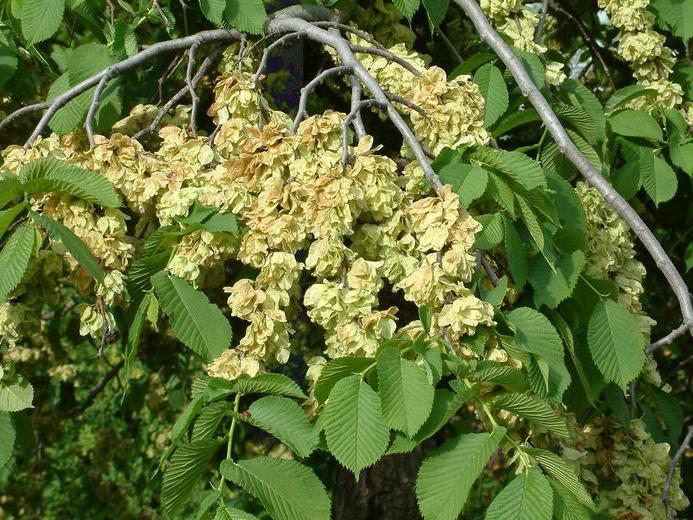
Poplar and aspen
Almost everybody can identify these plants, the determinant of trees in central Russia is unlikely to be needed here. But still, speaking of the most common plants in our country, it is impossible to ignore these species. By the way, not everyone knows that the second name of aspen is poplar trembling. This tree is very soilless, but loves the sun. Aspen is rapidly capturing fresh cuttings and clearings, but its age does not exceed 90-100 years. The trunk is long and smooth, with gray-green bark. The crown is small, sparse and high. The leaves are almost round, with a rough edge. The slightest breath of wind makes them shiver, due to the special structure of the stem. Top dark green, bottom - gray. In the fall, they acquire a rich burgundy color.
Better known as a "cultural" tree. It is more often found in cities along the highway or on village streets than in the woods. Poplar appreciates the sun and moisture. Under favorable conditions, the tree grows to 40 meters. The bark is gray, rough, with longitudinal cracks. The crown is extensive. Leaves are heart-shaped.
Conclusion
So, the article briefly described the trees of central Russia, whose names are well known to all. Look at the photos, practice a little - and it will not be difficult to distinguish one plant from another. Fortunately, as already noted, the forest flora of a temperate climate is not so numerous.
Hello, dear friends! As always, the “School” and the “Projects” heading rush to your aid. Are you ready to tell about the deciduous trees of Russia in the world lesson? Here is the material to help you!
Lesson plan:
What do we know about leafy plants?
Let me remind you that deciduous trees are those that have leaves. They are also called deciduous and summer greens, because every year they drop their leaves before the cold comes. About why they do it, told.

Deciduous plants appeared later than other species, but quickly spread due to their seeds. Today they grow in every corner of our planet and are its main landscapers.
Hardwood is often taken as a material for industrial purposes, as it is durable and easy to process. Many summer plants serve as a source of useful substances used in medicine. And deciduous trees bloom beautifully and harmoniously fit into the landscape, many of them bring delicious berries and fruits to our tables.
About the features of deciduous plants remembered. Now I propose to talk about their representatives. Do you know which deciduous tree is the most common in Russia? And the longest living? Below I have compiled for you descriptions of deciduous trees, most often found on the territory of our country.
White birch

Among deciduous trees, it is the most famous tree, especially prevalent in the north, but birch also grows in the central part of Russia and in the Caucasus. It can rightly be considered a symbol of Russia - how many songs and fairy tales folded! In total there are more than a hundred species of birch, among them are dwarf.
It is interesting! The name goes back to the pro-Slavic berza - “turn white, glow”. And all this is due to the snow-white trunk, the color of which gives a special resinous substance - betulin, the cavities of the cells are filled with it. Another tree name is associated with the word birch bark.
Birch grows up to 40 meters and lives up to 120-150 years, but there are 400 centenarians who live long enough. Birch leaves are jagged at the edges, and their shape is in the form of a rounded rhombus or triangle.
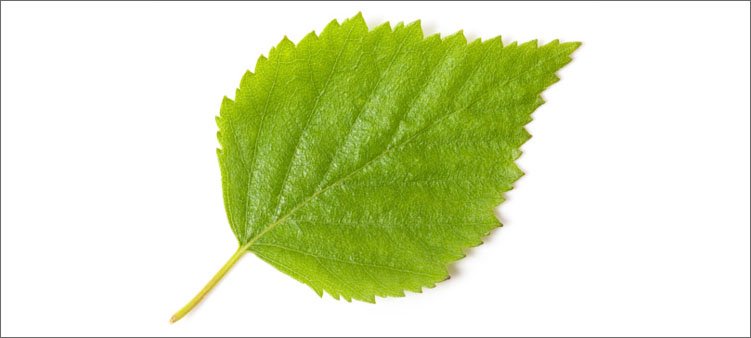
Birch inflorescences look like a female adornment - earrings, where fruits ripen and then crumble. The seeds of the tree are like oblate nuts that have a wing. Light and small, they are carried by wind to a distance of 100 meters.

Most species of birch tolerate frost well, so they can live even beyond the Arctic Circle. Those that love the climate warmer settle in the territory of central Russia. Moreover, the plant can grow on clay and sand, on the wet shores of seas and rivers, on a swamp and in the tundra, on stones and in steppes.
What is birch suitable for? Its top layer, called birch bark, used to be used in folk crafts - they used to make bast shoes, baskets, dippers and other household items. Today birch is a material for plywood, skis and wooden toys. Birch leaves and buds are used in medicine.
If you make an incision on the trunk of a birch tree in spring, you can collect a delicious birch sap. Just do not forget the wounds inflicted on the tree and then smear it with clay so that harmful organisms do not get there.
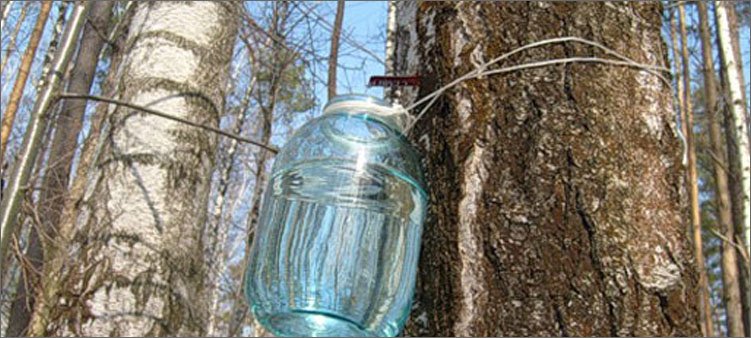
It is interesting! In nature, there is a birch Schmidt, named after the botanist who discovered it, nicknamed “iron”. It is found in the south of Primorye, and the tree is called so because it is a fire-resistant breed with very strong wood that sinks in water. They say that you will not take it with an ax, nor will you pierce it with a bullet.
Strong oak

Oak, also known by Pushkin Lukomorye, is also a frequent inhabitant of deciduous forests. There are about 600 species in total, but only one is common in Russia - pedunculate. Oak can grow both in the north with a temperate climate and in the south. A true long-liver among all hardwoods up to 45 meters long, it can please the eye for about 1500 years, but this is not the limit!
It is interesting! In Lithuania, lives the oldest oak, which celebrated the two thousandth anniversary. And the Poles have three friends - Czech (Czech Republic), Lech (Poland) and Rus (Russia) friendship friends, they are 900 years old.
Many oak species are evergreen - they have some notched leaves that, with their oblong appearance, resemble an ellipse, remain on the tree for many years. Oak is easily recognizable by the fruit - acorns. These are such nuts.

It is interesting! Acorns are good food for animals, but pigs especially love them. Even Krylov's fable is “A pig under an oak tree”. And just under the oaks due to the peculiarity of its root system, expensive mushrooms - truffles grow.
Today, oak nuts are used for cooking, Koreans with them make jelly Tothorimuka. Acorns from Russian English oak go only to coffee.
But oak wood is a real value for furniture production. It is strong and durable. Furniture made of oak is considered one of the most expensive.
![]()
The tree that has lain for at least 100 years in the water is especially appreciated. They call this oak baked, its color gets almost a black tint. Flooring is also oak floors - parquet. In addition, oak wood is used in shipbuilding.
Apple tree
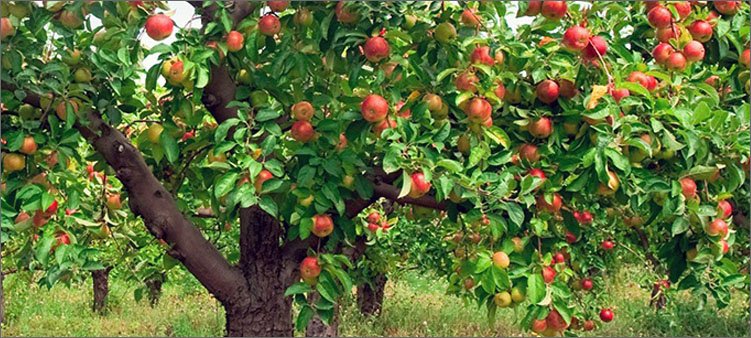
Who does not like bulk apples? Today there are about 36 species of apple trees, some of them are grown as ornamental, their fruits do not fall on our tables, but most give us rich apple harvests. Who has not heard about Antonovka and white filling?
The homeland of apple trees is considered to be Kazakhstan and Kyrgyzstan, but today the breeders have adapted to grow the tree, not only in warm lands, but also in the north.
The tree has a spreading crown, it grows up to 15 meters long. Wild apple trees even have thorns on the branches. Apple trees bloom beautifully with white or red flowers. Fruits are the size of a pea, but the usual apple varieties contain many vitamins, as well as micro and macro elements.

It is interesting! When you're tired, make your own apple tea with cinnamon. It will relieve irritation, restore sleep and give strength.
What is useful apple? In addition to making delicious dishes from apples, they make jam, squeeze juices and dry them, the apple tree is an excellent material. Its wood is used to make handicrafts as well as joinery, as it is easy to cut and polish.
Poplar

Unpretentious poplars can grow on any soil, in the middle belt or in the north, but they do not like bogging very much. The tree can live up to 150 years, but often dies much earlier due to various fungal diseases. Sometimes a tree can reach 60 meters.
The shape of the crown of the poplar can be different, depending on where it grows. Usually in the south these are pyramidal species, in poplars growing closer to the north there is a spreading wide crown of oval-shaped leaves.
Poplar fruits are boxes. Remember the song about poplar fluff and July? It is upon the onset of warm summer weather that these fruit boxes release seeds with fine hairs that fly into the park paths and cover them like snow.

It is interesting! Do you know that yellow leaves are made of poplar leaves, and purple ones are made of poplar buds ?!
Where is applicable poplar? The wood of this tree serves as raw material for the manufacture of paper. Artificial silk, match straw and some furniture are also made from poplar. In the south, poplar wood is even built at home.
Linden tree

In the west of Russia and up to the Urals, you can meet linden, which combines about 40 main species. But some hybrids count up to 350! A tree leaves in the form of hearts with serrate edges. Lipu, too, can deservedly be attributed to the long-livers. On average, they live for about 400 years, but some age reaches 1000.
Lipa stands out for its beauty, especially during flowering in June and July. Then the air is filled with a delicate sweet aroma.
![]()
It is interesting! Under the kings of linden crooks cut out the royal seal, forging state attribute. Hence the expression "linden seal", "linden", or fake.
Where used linden? First of all, for the manufacture of medicines. And not only flowers, but also other parts of the plant are used.
In addition, the linden is a tree for art, musical instruments and carvings are made of it.
And still linden cut pads to sew us beautiful boots, and drawing boards.
Sometimes this plant is used to make furniture.
Who has not heard of lime honey, so useful in the icy winter?
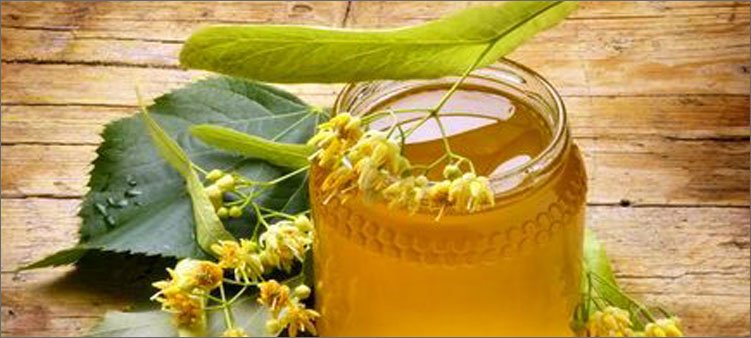
I told only about the top five of deciduous trees that are often found in Russia. As you know, a great many of them.
Well, you did a good job, and now you can sing! Watch the video and sing along)
Maybe you replenish the article with a story about your favorite tree? A "School" with the wishes of good marks goodbye, but not for long!
Evgenia Klimkovich.
The flora of the Earth is huge and diverse: it consists of 350,000 species, and according to some botanists, even 500,000 plant species.
The plant kingdom includes algae, fungi, slugs and seed plants, which are divided into gymnospermous plants and family of flowers , and among the latter distinguish grass and tree species. It is known that almost all the variety of plant species at present, man has already described and systematized, creating a natural system of flora based on scientific principles of establishing kinship between certain groups of plants. The modern system of flora is subdivided into systematic units coordinated to each other, among which the main unit is a species. Related tree species are combined into genera, and related genera into families. Then more and more large unions follow: orders, classes, divisions and, finally, the highest systematic unit - the plant kingdom.
tree classification
Usually, woody plants are divided into the following groups according to the nature of the structure of the main stems and height: trees, shrubs, shrubs, subshrubs and lianas.
Tree
The tree is considered to be a large plant with a perennial woody main stem, usually called the trunk, which grows in height at its apex. The speed of growth of trees in height depends on the environmental conditions, the geographical area of growth and the biological characteristics of this species. The tree grows in height inconstantly, growth changes throughout the life of the tree until the complete cessation.The height of the tree is different for different tree species and ranges from a few to many tens of meters, and in some cases reaches up to 120 m and more. This height reaches the evergreen sequoia and giant sequoiadendron growing on the California coast of North America in the mountain forests, and Australian eucalyptus trees. The trees of our forests do not reach such sizes, but many of them grow to 40-50 m and more. So, common spruce, Sakhalin fir, Siberian larch and others reach 40 m and more, Eastern spruce, European beech 50 m and more, Shrenka spruce in favorable conditions 85 m, Caucasian fir 65 m. Certain European fir trees sometimes reach 60 ( 90) m height. Larch is European and has a height of up to 54 m, oak oak is 40-50 m, Transcaucasia plane trees 45-50 m. Such species as birch, aspen, linden, elm, elm, Norway maple, etc., rarely exceed 25-35 m.
Wide areas of natural vegetation and soils of Russia are closely related to the country's climate zones. In the far north, where there is a cold summer, and the soil is poor in nutrients, mosses, lichens and low-growing shrubs prevail. The soil freezes to a great depth and only the surface layer thaws in the summer allowing the plants to grow. Forests cover about 45 percent of the territory of Russia, mostly in Siberia. The total area of all forests is about 25 percent. The forest zone of Russia can be divided into a large northern part - coniferous, or Taiga, and a much smaller southern region - coniferous-deciduous forests.
Boreal forest
Taiga is located south of the tundra and occupies 40 percent of the European part of the country, and also covers large areas of Siberia and the Russian Far East. Most of this region reigns supreme. Despite the fact that the taiga zone mainly consists of conifers, in some areas small-leaved trees such as birch, poplar, aspen and willow add diversity. In the extreme north-west of the European part of Russia, pine dominates in the taiga, although fir, birch and other trees are often found.
To the east to the western slope of the Urals, pine still grows, but fir is already dominant, and in some areas there are almost pure birch forests. The West Siberian Plain consists mainly of various species of pine, and birch dominates along the southern edge of the forest. For the most part of the Central Siberian Plateau and the mountains of the Far Eastern region, larch is the main tree-forming species. The trees of the taiga zone are usually small and rather widely scattered. In some areas, where soils are scarce for nutrients, there are no trees at all, but only marsh grasses and bushes form vegetative cover.
Mixed forests
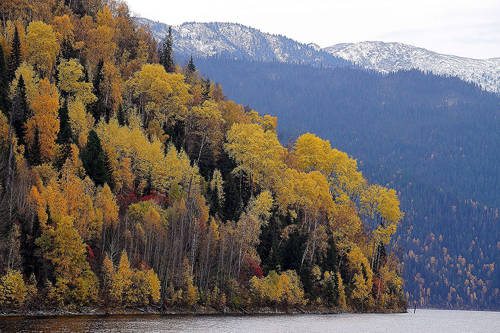
The zone of mixed forests in the central part of the East European Plain from St. Petersburg in the north to the border with Ukraine in the south is characterized by the presence of both coniferous and broad-leaved trees. Evergreen conifers prevail in the north, while deciduous trees are common in the south. The main broadleaf species include oak, beech, maple and hornbeam.
A similar forest cover prevails in the southern part of the Far East of Russia, along the valley of the river, the middle Amur, and to the south along the valley of the Ussuri River. The basis of the soil cover of the mixed forest zone is gray-brown forest soils. They are not as barren as Taiga soils, and with proper agricultural processing, they can be very productive. In the south, a narrow zone of forest-steppe separates the mixed forest from the steppes.
Forest-steppe and steppe

Although currently a significant area of forest-steppe is plowed, it has natural meadow vegetation with scattered groves of trees. On average, about 150 km wide, this zone extends eastward through the valleys of the middle Volga and the Southern Urals in the southern parts of the West Siberian Plain. Separate areas of forest-steppe are also found in the southern intermountain basins of Eastern Siberia. A mixture of grasses with small patches of trees in sheltered valleys is the natural vegetation of the Russian steppe — a large area that includes the western half of the North Caucasus Plain and the land belt stretching east through the southern Volga valley, the southern Urals and the western regions of Siberia. As in the case of the forest-steppe zone, almost all steppes of the country are cultivated.
List of plants of Russia
Below is a list of some trees, shrubs, herbs with descriptions and photos that characterize the flora of Russia.
Downy birch
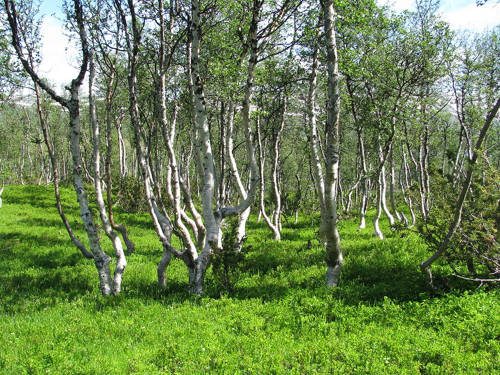
Downy birch is a species of deciduous trees, found throughout northern Europe and northern Asia, growing to the north than any other broad-leaved trees on the planet. It is often confused with a related species - wild birch, but fluffy birch prefers more humid areas, grows well on heavy and poorly drained soils; young trees are also easily confused with dwarf birch.
Common Hornbeam
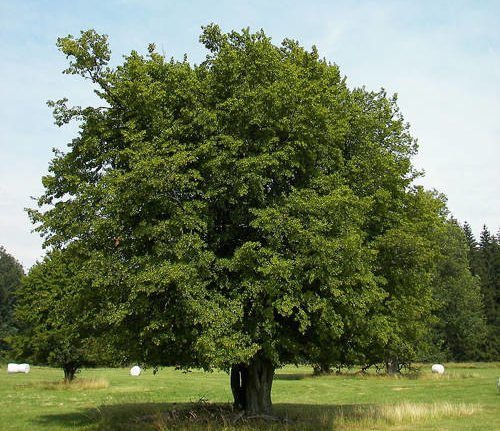
Common Hornbeam, also known as the European or Caucasian hornbeam, native to Western and Central Asia, as well as Eastern and Southern Europe is a species of deciduous trees. It prefers a warm climate, and is found only at an altitude of 600 meters above sea level. It grows in mixed forests with oak, and in some areas with beech.
Pedunculate oak
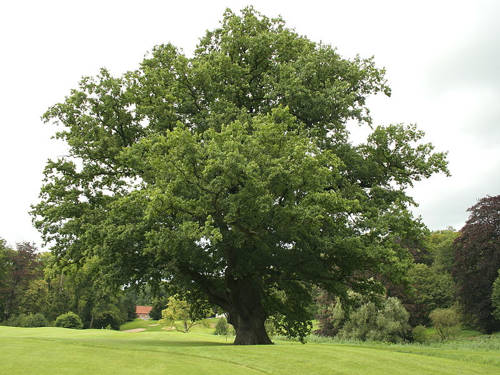
A tree from the beech family, widespread in the European part of Russia. It is the dominant tree species in the southern areas of the forest and forest-steppe zones. This is a large deciduous tree, reaching 40 meters in height and 4-12 meters in circumference of the trunk.
Siberian spruce
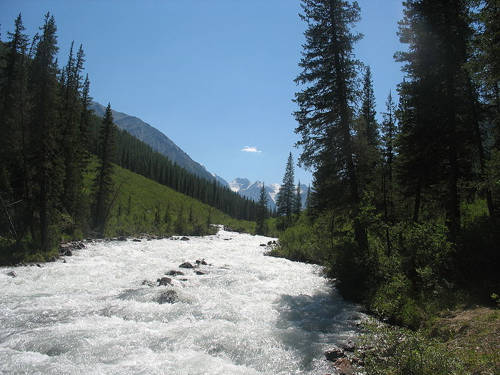
Siberian spruce is a coniferous tree, a native Siberian species of spruce, growing from the Ural Mountains east to Magadan Oblast, as well as from the arctic forest line to the Altai Mountains in northwestern Mongolia.
White willow
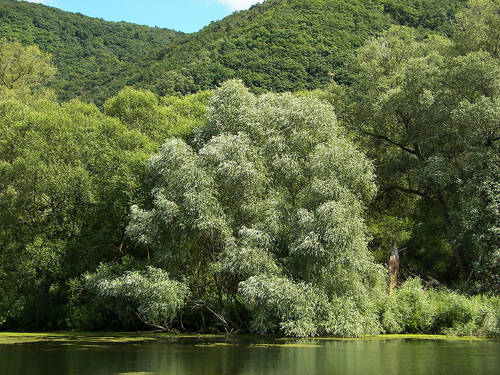
White willow is a species of willow found in Europe, West and Central Asia. The name comes from the white shade of the underside of the leaves. These are medium or large deciduous trees, growing up to 10-30 meters in height, with a trunk diameter of about 1 meter. The bark is gray-brown, deeply fissured in old trees.
Field maple

Native to much of Europe, the British Isles, South-West Asia (from Turkey to the Caucasus) and North Africa (in the Atlas Mountains), a species of trees from the sapindo family. They are also successfully cultivated outside their natural range in the United States and Western Australia in areas with a suitable climate. In Russia, the most common in the middle zone of the European part of the country.
It is a deciduous tree, reaching 15-25 meters in height, with a trunk up to 1 meter in diameter and finely fissured, thin bark.
Siberian larch

Siberian larch is a frost-resistant conifer growing in the western part of Russia, from the Finnish border to the east to the Yenisei valley in central Siberia, where it hybridizes with Gmelin larch; The hybrid is known as Chekanovsky Larch.
Siberian larch reaches 20-50 meters in height, with a trunk diameter of up to 1 meter. The crown is conical in young trees, and acquires an oval-rounded shape as it grows.
Juniper ordinary

Common juniper is a species of coniferous trees with the largest geographic range among woody plants with a circumpolar distribution throughout the subarctic belt, from the arctic to the south to 30 ° north latitude in North America, Europe and Asia. Relic populations can be found in the Atlas Mountains of Africa. On the territory of Russia, to meet in the forests and forest-steppe of the European part of the country, as well as in the western and less often eastern regions of Siberia
Common juniper is a small evergreen tree or shrub of very variable shape and height up to 16 meters.
Alder is gray
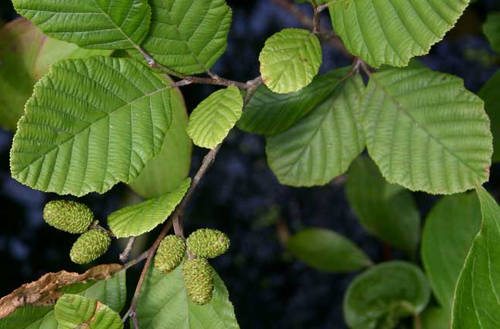
Gray alder is one of the species of the alder genus with a wide range in cold regions of the northern hemisphere.
The size of the trees varies from small to medium, with a maximum height of about 15-20 meters, smooth gray bark (even in older specimens), and a life expectancy of no more than 60-100 years.
Aspen
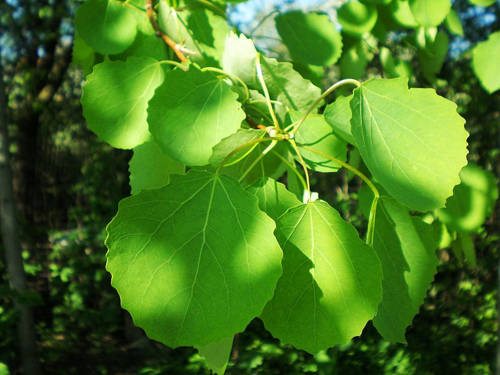
Aspen is a species of deciduous trees, common in temperate and cool regions of Europe and Asia, from Iceland and the British Isles east to Kamchatka, in the north within the Arctic Circle in Scandinavia and Russia, southern and central Spain, Turkey, Tien Shan, North Korea and Northern Japan.
This is a tall deciduous tree, growing up to 40 meters in height, with a trunk diameter of more than 1 meter. The bark is pale greenish-gray, smooth on young trees with dark gray rhomboid lentils, becomes dark gray and fissured on old ones.
Pine Siberian cedar
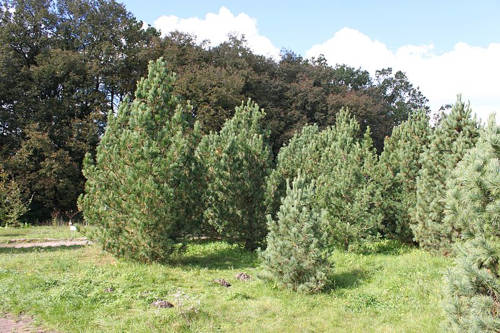
Siberian cedar pine is a variety of pine growing in Siberia from 58 ° east longitude in the Urals to 126 ° east longitude in the south of the Sakha Republic, and also from 68 ° north latitude in the lower Yenisei valley to south south 45 ° north latitude in central Mongolia.
In the north of its range, it grows at low altitudes, usually 100-200 meters, while closer to the south, it occurs at an altitude of 1000-2400 meters above sea level. Siberian pine pine is a slow-growing tree, with a maximum height of 30-40 meters, and a trunk diameter of about 1.5 meters. Life expectancy is 800-850 years.
Siberian fir

Siberian fir is a coniferous evergreen tree growing in the taiga east of the Volga River and south of 67 ° 40 "northern latitude in Siberia, through Turkestan, northeast Xinjiang, Mongolia and Heilongjiang.
It prefers a cold climate, moist soil in the mountains or river basins at altitudes of 1900-2400 meters above sea level. Siberian fir is a very shade-tolerant frost-resistant tree that grows at temperatures up to -50 ° C. It rarely lives for more than 200 years because of its susceptibility to tree fungus.
Mountain ash
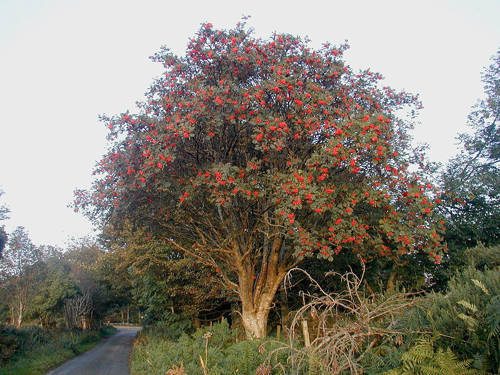
Rowan ordinary - a woody or shrub plant from the family of pink. The range extends from Madeira and Iceland to Russia and North China.
Rowan tree is found in the form of a tree or shrub that reaches 5 to 15 meters in height. The crown has a rounded or irregular shape, and the trunk is thin and cylindrical up to 40 cm in diameter.
Barberry ordinary
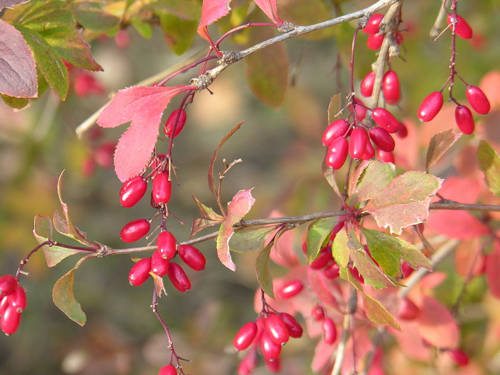
This deciduous shrub can reach up to 4 meters in height. The leaves are small oval, 2-5 cm long and 1-2 cm wide, with a serrated edge; they grow in bunches from 2 to 5 sheets. The flowers are yellow, 4-6 mm in diameter, bloom on the length of the brush in late spring. Oblong red berries 7-10 mm long and 3-5 mm wide ripen in late summer or autumn; they are edible, but very sour and rich in vitamin C.
Ledum rosemary

Low shrub about 50 cm (rarely up to 120 cm) with evergreen leaves 12-50 mm long and 2-12 mm wide. The flowers are small, with a five-lobed white corolla, and emit a strong odor to attract bees and other pollinating insects. It has a wide geographical range in Russia, which covers the tundra, forest zone, Siberia and the Far East.
Common lilac
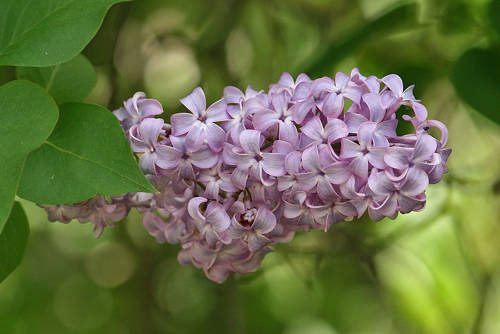
Common lilac is a flowering shrub plant from the Olive family, originally from the Balkan Peninsula, where it grows in the wild on rocky hills. The species is widely cultivated as an ornamental plant and has been naturalized in other regions of Europe (including Russia, Great Britain, France, Germany and Italy), as well as in most of North America.
This is a large deciduous shrub or a small multi-stemmed tree that grows up to 6-7 meters, producing secondary shoots from the base or root system, which can grow into a small colonial thicket over the course of decades. The bark is gray or gray-brown in color, smooth on young stems, and longitudinally furrowed on old stems. The leaves are simple, 4-12 cm long and 3-8 cm wide, from light green to bluish color, from oval to heart-shaped, with feathery venation and a pointed top. Flowers usually range from lilac to mauve, sometimes white. The fruit is a dry, smooth, brown capsule, 1-2 cm long, split into two parts to release the seeds.
Kalina ordinary
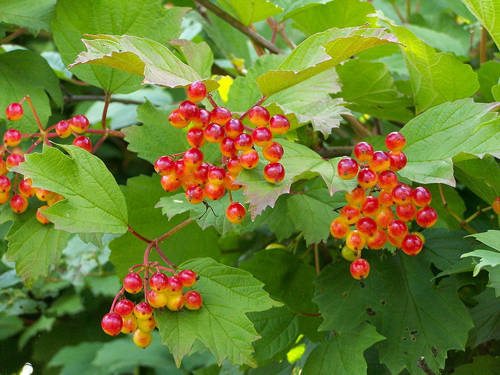
Viburnum ordinary - deciduous shrub plant, reaching 4-5 meters in height. The leaves are opposite, three-bladed, 5-10 cm long and wide, with a rounded base and coarsely serrated edges; looks similar to the leaves of some species of maple, but differs slightly wrinkled surface. It blooms in early summer and is pollinated by insects. Spherical bright red fruits (7-10 mm in diameter) contain one seed. Seeds are spread by birds and other animals.
Mac Polar
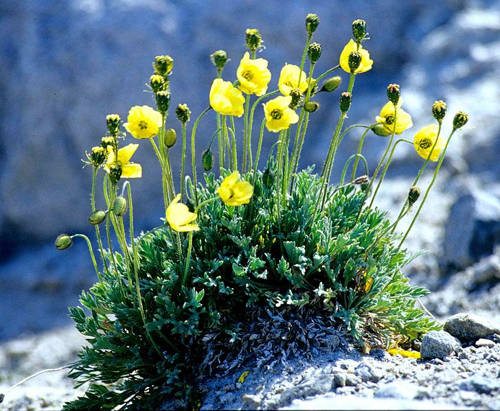
One of the most northerly plants in the world. The stem is hard, hardy and covered with black hairs, flowers with delicate yellow or white petals. Flowers constantly turn toward the sun, repeating its movement across the sky, and attracting insects. Arctic poppy grows in meadows, mountains and dry riverbeds. They thrive among stones that absorb the heat of the sun and provide shelter for the root system.
Stinging nettle
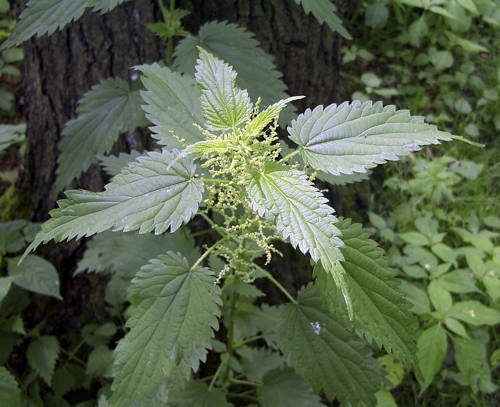
Nettle is easily recognizable, unfortunately, often easily perceived plant, the stems and leaves of which are covered with stinging hairs. It is an effective way to avoid the fate of being eaten, and also makes nettles an important haven for caterpillars and many other insects. In addition to nettle, nettle is widespread in Russia.
Violet tricolor
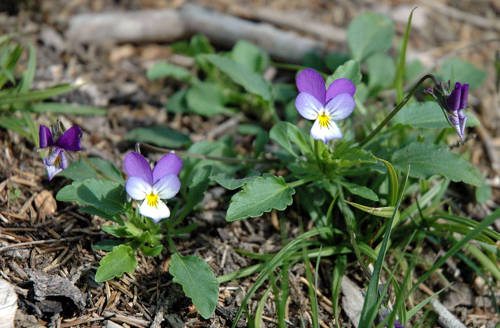
Violet tricolor, also known as pansies - an annual, sometimes perennial plant, growing in Europe and temperate regions of Asia. It has also been introduced in North America where it has spread widely. It is the progenitor of the cultivated violet, and therefore it is sometimes called wild violet.
Chess grouse
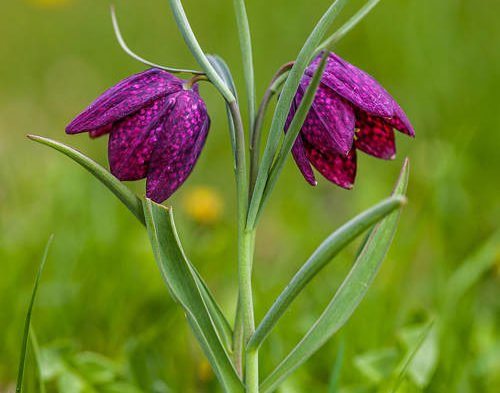
Chess grouse is a perennial herb that has a rather unusual look as for wild flowers. It prefers raw, lowland meadows and pastures of Europe and Western Asia. It flourishes on soils that have never been subjected to intensive agriculture, and is now becoming increasingly rare.
Sedge
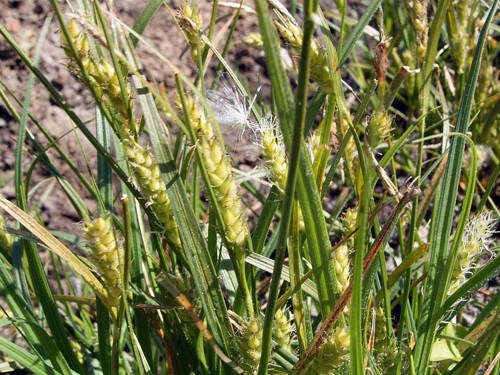
Sedge - a genus of perennial herbaceous plants, numbering about 2 thousand species. In Russia, there are between 300 and 400 species that grow in different climatic conditions, landscapes and habitats throughout the country.
In this section of the encyclopedia of plants you can find out what trees are, study their various types and decide what trees to plant on your site or in the garden. All trees are divided into several varieties, so you can visit one of the sections that interest you most. At the bottom of this page there is a photo gallery in which you can find ornamental and fruit tree species together, including coniferous and deciduous species with photos and names arranged alphabetically. About each type you can learn important features on additional pages. This information will help you in deciding which trees to plant, according to their care requirements.
| Siberian apricot photo, description Flowering plant blooms from late May (10 days) height: up to 1.5 m 
|
Japanese apricot photos, varieties, description syn. Apricot mume (mume), Chinese plum, Japanese plum Fruit, ornamental tree or shrub height: up to 6 m 
|
Chinese quince photo, description Fruit and ornamental tree Medicinal plant Grown in a mild climate height: 10 - 18 m 
|
|---|---|---|
| Ailanthus photo, description syn. Chinese ash is the highest, ailant glandular Decorative tree Flowering plant height: 18 - 25 m 
|
Silver Acacia (whitened) photo, description popularly: mimosa Evergreen leaf. tree Indoor plant height: 10 - 12 m 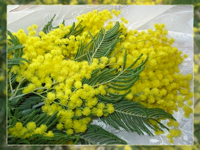
|
White acacia (nar name)
photo, description scientific Robinia pseudoacacia, Robinia vulgaris, Robinia pseudoaciaceae, Robinia pseudoacacia Flowering tree, honey plant Decorative tree height: 20 - 35 m 
|
| Albizia photo, description syn. Acacia of Constantinople (popularly) Flowering tree, less shrub Mild climate garden plant (some species) Indoor plant height: up to 10 m 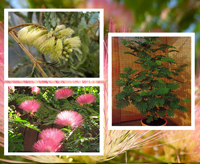
|
Albizia Lankaran photo, description syn. Silk acacia (drug) silk tree (drug) Blooming tree Mild climate garden tree Indoor plant height: 6 - 9 m 
|
Ginkgo bilobed photo, description syn. Ginkgo biloba Garden Resilient Tree Medicinal plant  |
| Spruce photos, types, description drug Christmas tree It has dwarf, spherical, conical, creeping varieties  |
Linden photo, types, landing, care Trees, rarely shrubs Coliform, cone-shaped, globular varieties  |
Larch photos, types, general description Deciduous conifers, decoration. shrubs Decorative varieties include weeping, spherical, pyramidal, hemispherical, standard plants.  |
| Juniper photos, types, description, varieties syn. Veres - juniper ordinary Trees, shrubs Colonic, conical, dwarf, creeping varieties 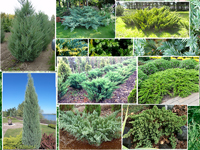 |
Robinia, its species and varieties drug Acacia Deciduous trees and shrubs Ornamental plant There are non-flowering varieties Medonos 
|
Pine photos, types, value, description syn. some species: cedar elfin, Siberian cedar (Siberian pine) Trees, shrubs or creeping plants Colony-shaped, conical, shrubby, creeping, dwarf species and varieties 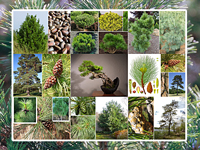 |
| syn. yucca filamentous - Adam's needle, garden yucca, garden palm tree, tree of happiness
Garden or indoor plant Evergreen shrub or tree average height: 30 cm - 2 m  |
Trees are perennial woody plants, a characteristic feature of which is the presence of a central lignified trunk from which skeletal and lateral branches depart, forming a crown.
All trees by the form of foliage are deciduous and coniferous. Coniferous trees have hard, scaly or needle-shaped leaves, called needles. Deciduous trees have wide and flat leaves. What other trees there are: deciduous and evergreen. Evergreen trees change their leaves imperceptibly throughout the year, they do not have pronounced seasonal leaf fall, which allows them to be covered with leaves all year round. This cannot be said of deciduous plant species that completely lose their leaves in the autumn-winter season. In addition to the biological classification, there are other divisions that have arisen in the process of human life. For example, according to various signs, trees are divided into shiplike, valuable, cultural, fruit, tropical, etc.

